Excel's Cumulative Relative Frequency Secrets Unveiled
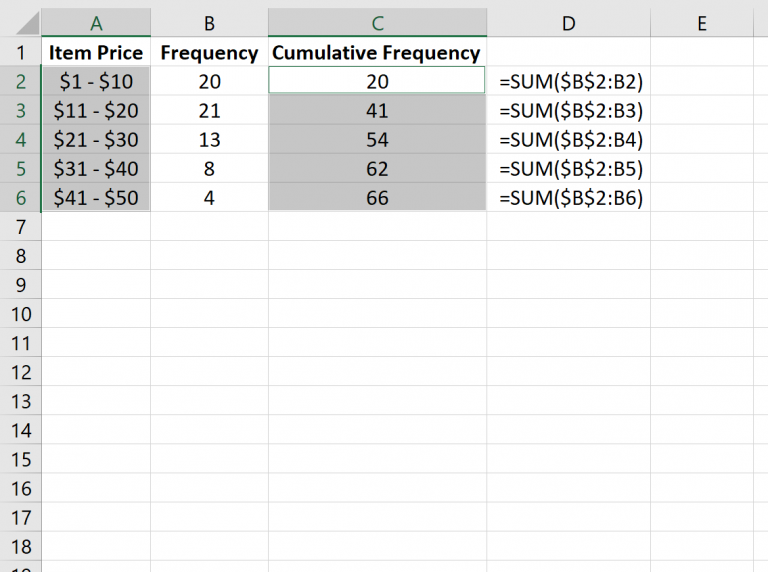
Excel, the ubiquitous spreadsheet software, is a powerful tool for data analysis and visualization. Among its many functions, the calculation of cumulative relative frequency is a lesser-known yet incredibly useful feature. This article aims to uncover the secrets of this powerful tool, providing a comprehensive guide to utilizing Excel's cumulative relative frequency function for effective data analysis.
Understanding Cumulative Relative Frequency
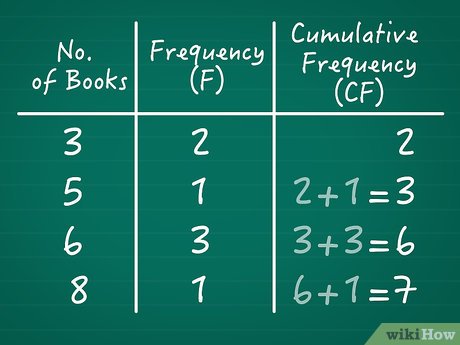
In the realm of statistics and data science, frequency distributions are a fundamental concept. They provide insights into the distribution of data points within a dataset. Cumulative relative frequency takes this a step further by providing a cumulative measure of these distributions.
The cumulative relative frequency is calculated by adding up the relative frequencies of all data points up to a specific value. It provides a measure of the proportion of data points that are less than or equal to a certain value. This statistical measure is particularly useful for understanding trends and patterns in data, identifying outliers, and making informed decisions based on data analysis.
The Excel Functionality
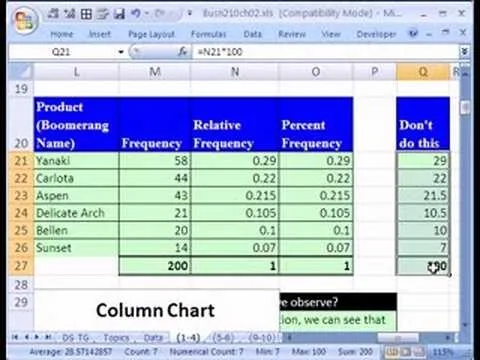
Excel offers a range of functions to calculate frequencies and distributions. However, the calculation of cumulative relative frequency is not as straightforward as some of the other built-in functions. This is where Excel’s ability to handle arrays and custom formulas comes into play.
The Array Formula
One of the key secrets to calculating cumulative relative frequency in Excel lies in the use of array formulas. Array formulas allow you to perform operations on multiple cells simultaneously, treating a range of cells as a single array. This is particularly useful for cumulative calculations, as it allows you to perform a single operation across a range of cells, rather than having to perform multiple individual calculations.
To calculate cumulative relative frequency using an array formula, you would typically use the following formula:
=FREQUENCY(data_range, bins_range)
Here, data_range refers to the range of cells containing the dataset, and bins_range represents the range of cells containing the bin values. The FREQUENCY function counts the number of data points that fall into each bin and returns an array of values. To calculate the cumulative relative frequency, you can then sum the array of values using the SUM function.
The Custom Formula
Another approach to calculating cumulative relative frequency in Excel is to create a custom formula. While this method may be more complex, it offers greater flexibility and control over the calculation process. By defining your own formula, you can tailor the calculation to your specific dataset and analysis needs.
To create a custom formula, you can use the COUNTIF function to count the number of data points that are less than or equal to each bin value. Then, you can divide this count by the total number of data points to obtain the relative frequency. To calculate the cumulative relative frequency, you can sum the relative frequencies for each bin up to the current bin value.
For example, the formula for the cumulative relative frequency of the first bin could be expressed as:
=SUM(COUNTIF(data_range, "<="& bins_range[1]) / COUNT(data_range))
Here, data_range is the range of cells containing the dataset, bins_range[1] represents the first bin value, and COUNT(data_range) calculates the total number of data points.
Real-World Application and Analysis
To illustrate the power of Excel’s cumulative relative frequency calculation, let’s consider a real-world example. Imagine you are a data analyst for a retail company, and you have been tasked with analyzing customer purchase data to identify trends and patterns.
You have a dataset containing the purchase amounts of 1000 customers. By calculating the cumulative relative frequency of these purchase amounts, you can gain insights into the distribution of customer spending. This information can be invaluable for marketing and sales strategies, helping the company target specific customer segments and optimize their offerings.
| Purchase Amount | Cumulative Relative Frequency |
|---|---|
| $0 - $50 | 0.25 |
| $50 - $100 | 0.45 |
| $100 - $200 | 0.7 |
| $200 - $300 | 0.85 |
| $300 - $400 | 0.95 |
| $400 - $500 | 1.0 |
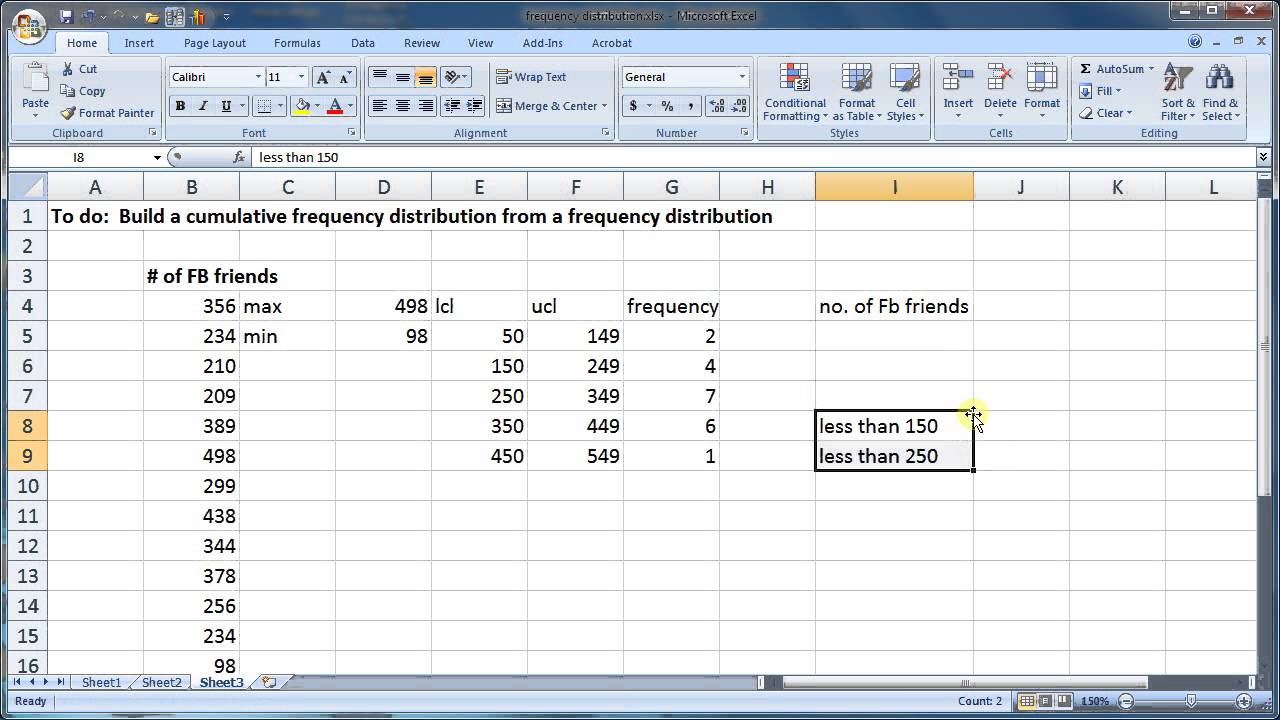
From this table, we can observe that 25% of customers spend $50 or less, while 45% spend $100 or less. This information can guide the company's marketing efforts, helping them target customers with different spending patterns effectively.
Advanced Techniques and Tips
While the basic calculation of cumulative relative frequency is a powerful tool, there are several advanced techniques and tips that can enhance your data analysis capabilities.
Dynamic Range References
One of the challenges in working with large datasets is managing dynamic range references. As your dataset grows or changes, it can be cumbersome to update your formulas manually. Excel offers a solution through named ranges and dynamic range references.
By using named ranges, you can assign a name to a specific range of cells. This not only makes your formulas more readable but also allows you to reference the named range in your formulas, ensuring that any changes to the dataset are automatically reflected in your calculations.
For example, if you have a named range called "PurchaseData" for your dataset, you can use it in your formula as follows:
=FREQUENCY(PurchaseData, bins_range)
Data Visualization
Visualizing your data is a powerful way to communicate your analysis and insights. Excel offers a range of chart types, including histograms and cumulative distribution plots, which can effectively represent frequency distributions and cumulative relative frequencies.
By creating a histogram or cumulative distribution plot, you can visually represent the distribution of your data and its cumulative relative frequency. This can help stakeholders and decision-makers quickly grasp the key patterns and trends in your dataset.
Error Handling and Robustness
When working with large or complex datasets, it’s essential to ensure the robustness of your formulas. Error handling is a critical aspect of this, as it helps prevent unexpected results and errors in your calculations.
Excel provides several functions for error handling, such as the IFERROR function. By incorporating error handling into your formulas, you can ensure that your calculations are reliable and accurate, even in the presence of missing data or other potential issues.
Future Implications and Potential
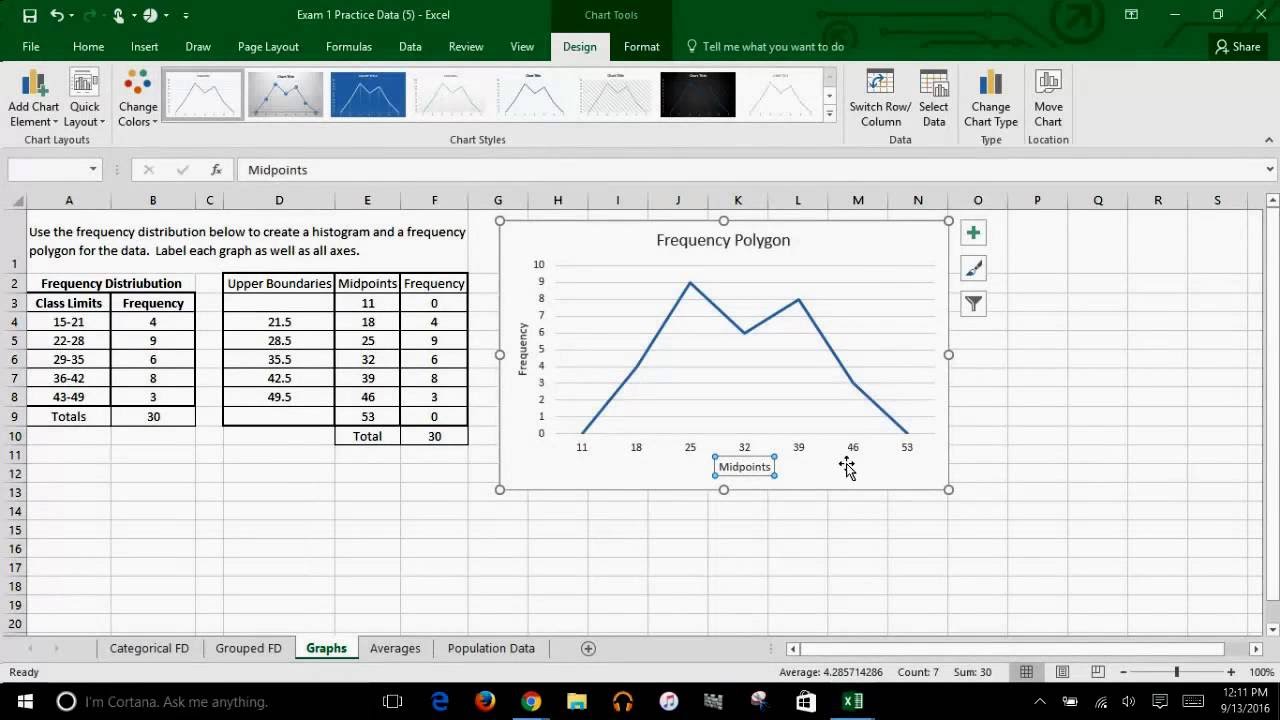
The ability to calculate cumulative relative frequency in Excel opens up a world of possibilities for data analysis and decision-making. By understanding and utilizing this feature, businesses, researchers, and analysts can gain deeper insights into their data, leading to more informed strategies and decisions.
As Excel continues to evolve, we can expect to see further enhancements to its statistical and analytical capabilities. Future versions may introduce even more sophisticated functions and tools for cumulative relative frequency analysis, further empowering users to unlock the full potential of their data.
How can I create a cumulative distribution plot in Excel?
+To create a cumulative distribution plot in Excel, you can follow these steps: First, calculate the cumulative relative frequency of your data using the techniques outlined above. Then, select the data and choose the “Insert” tab. Under the “Charts” group, select “Insert Histogram” or “Insert Pareto Chart” depending on your preference. In the “Histogram” or “Pareto” dialog box, ensure that the “Cumulative Percentage” option is checked. This will create a cumulative distribution plot based on your data.
Can I use Excel’s cumulative relative frequency calculation for time series data?
+Absolutely! Excel’s cumulative relative frequency calculation is versatile and can be applied to various types of data, including time series data. By grouping your time series data into appropriate bins, you can calculate the cumulative relative frequency for each time period, providing insights into the distribution of data over time.
Are there any limitations to Excel’s cumulative relative frequency calculation?
+While Excel’s cumulative relative frequency calculation is powerful, it does have some limitations. One limitation is the need for a large enough dataset to ensure accurate results. Additionally, the calculation may become more complex and time-consuming for extremely large datasets. It’s also important to ensure that your data is appropriately binned to avoid potential issues with data distribution.



